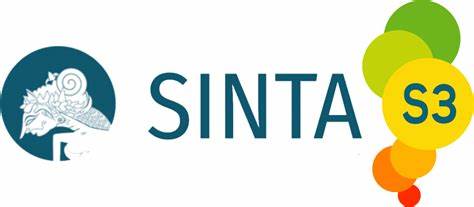IMPROVING STUDENTS’ SPEAKING SKILL THROUGH STORYTELLING TECHNIQUE (An Experimental Study in a Senior High School in Bandung)
DOI:
https://doi.org/10.22460/eltin.v3i1.p%25pAbstract
In senior high schools, the objective of the speaking skill is challenging, so it is not easy to achieve. The teachers and students may face some problems in the teaching and learning of speaking. Thus, this study attempts to investigate the effect of storytelling on students’ speaking ability and students’ attitudes toward its implementation of storytelling technique. This research was conducted at the tenth grade of a Senior High School in Bandung. It used a quasi-experimental design involving 30 students in the experimental group and in the control group respectively. The experimental group was given the treatment with storytelling technique, while the control group with conventional technique. The instruments used were speaking test (pre-test and post-test) given to both groups, and questionnaires to the experimental group only. The result of this study shows that : 1) the storytelling technique had an effect on improving students’ speaking ability because there was a significant difference between the post-test scores of students in experimental and control groups with the level of significance 0f 0,05 the t-observed (2,106) was higher than t-table (1,684). 2) Overall, students’ attitudes toward the implementation of storytelling technique were positive because they enjoyed the learning process and they were interested in the story. Moreover, the storytelling technique could help them to improve their speaking ability.
Keywords: Speaking ability, Storytelling, Technique.References
Brown, H.D. 2001. Teaching by Principles: An Interactive Approach to Language Pedagogy. New York: Addison Wesley Longmn Inc.
Burns, A. & Joyce, H. 1999. Focus on Speaking. National Centre for English Language Teaching and Reserch. Sydney: Macquarie.
Celce, M & Murcia. 2001. Teaching English as a Second or Foreign Language. (3rd ed). Boston: Heinle & Heinle.
Coconi,A. 2013. [Online] Available http://www.ehow.com/info_ 8771474_types- storytelling.html [ June 11 2014]
Creswell,J.W.2003.Research Design, Second Edition. California: SagePublications, Inc.
Farhady. 1982. Research Design and Statistic for Applied Linguistics. Massachusetts: Newburry House Publisher, Inc.
Harmer, J. 2004.How to Teach English :An introduction to the practice of English Language Teaching.Kualalumpur: Longman.
Maynard .B. .2005. The Importance of Story. Available in : http://subversiveinfluence.com/2005/01/the-importance-of-story/ [ June 12 2014]
Richard, J.C. 2008. Teaching Listening and Speaking : From Theory to Practice. New York: Cambridge University Press.
Thornburry, S. 2005. How to Teach Speaking. Essex: Stenton Associates
Ur. P. 1996. A Course in Language Teaching: Practice and Theory. New York: Cambridge University Press





